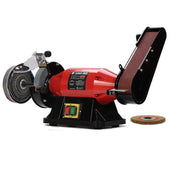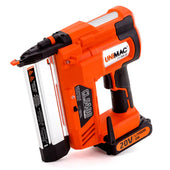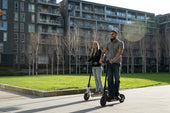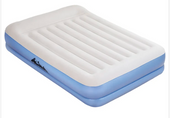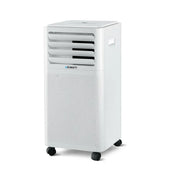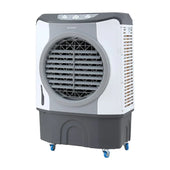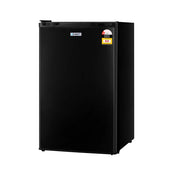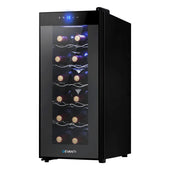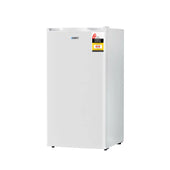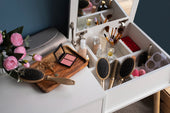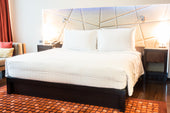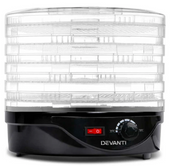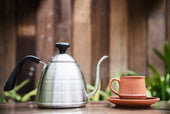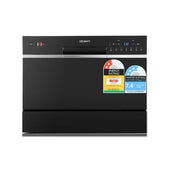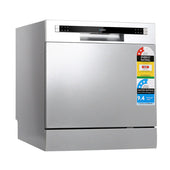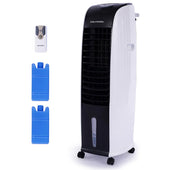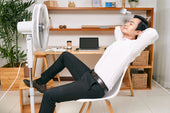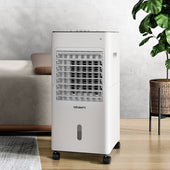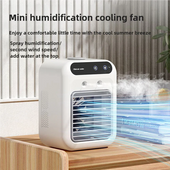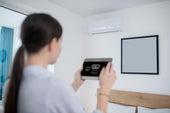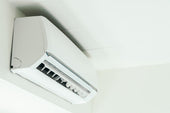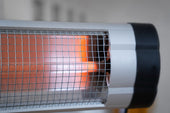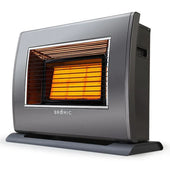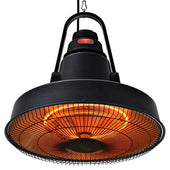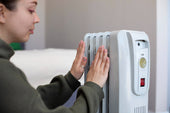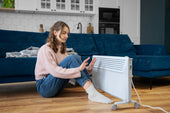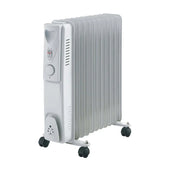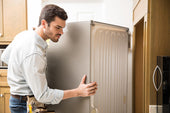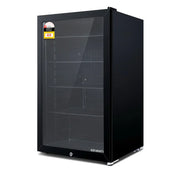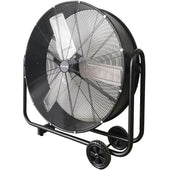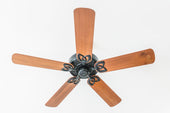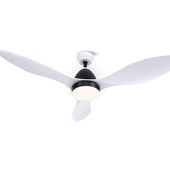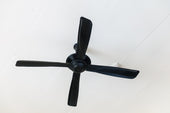Introduction to Weather-Resistant Chairs
Outdoor furniture is constantly exposed to unpredictable elements such as rain, wind, sun, and temperature fluctuations. Weather-resistant chairs are specifically designed to withstand these conditions without deteriorating in quality or performance. This resilience is achieved through the use of durable materials, protective coatings, and innovative manufacturing techniques.
Key features that contribute to a chair's weather resistance include:
- Material selection: Common choices include treated wood, synthetic wicker, durable plastics, and metals with anti-rust coatings.
- UV protection: Prevents fading and weakening of materials under prolonged sun exposure.
- Water resistance: Minimises moisture absorption, reducing the risk of warping, swelling, or mould growth.
These features ensure that outdoor chairs retain their aesthetics and functionality across seasons.
The Importance of Weather Resistance in Outdoor Furniture
Weather resistance is a critical feature for outdoor furniture, as it ensures durability and usability during days of varying environmental conditions. Outdoor chairs are constantly exposed to elements such as rain, sun, wind, and temperature fluctuations, all of which can contribute to wear and tear. Without weather-resistant materials, chairs may crack, fade, rust, or warp over time.
Materials such as aluminium, teak, resin, and polyethylene are often chosen for their inherent durability against moisture and UV rays. Additionally, weather resistance protects chairs from mould, mildew, and corrosion, maintaining appearance and structural integrity. Ensuring proper weather resistance reduces long-term maintenance and replacement costs.
Materials Commonly Used for Weather-Resistant Outdoor Chairs
Outdoor chairs designed to withstand weather conditions often utilise a range of durable materials. These materials are selected for their ability to endure exposure to elements such as rain, sunlight, and temperature fluctuations. Common options include:
- Teak Wood: Known for its natural oils and dense grain, teak is resistant to moisture, pests, and warping, making it ideal for outdoor use.
- Aluminium: Lightweight and rust-resistant, aluminium chairs often feature powder coatings for added durability.
- Wrought Iron: Treated with protective finishes to prevent rust, wrought iron provides strength and a classic design.
- Resin Wicker: Synthetic wicker mimics the appearance of traditional rattan while being impervious to water and fading.
- Plastic and Polypropylene: Easy to clean, fade-resistant, and available in various designs, offering affordability and functionality.
These materials are combined with UV-resistant paints, sealants, or treatments to enhance longevity further.
How Different Materials Respond to Weather Elements
Outdoor chairs are crafted using a variety of materials, each with distinct responses to environmental factors. Wood, such as teak or cedar, resists moisture due to natural oils, yet prolonged exposure can lead to cracking or warping unless treated. Aluminium, lightweight and rustproof, withstands rain effectively but is less resistant to strong winds. Wicker, often synthetic, endures UV radiation better than natural fibre, minimising fading. Plastic, especially high-density polyethylene (HDPE), resists water, mould and UV damage but may weaken under extreme cold. Steel, though durable, requires coatings to resist rust caused by humidity. Transitioning to weather-resistant materials enhances longevity and maintains functionality outdoors.
The Role of Coatings and Finishes in Weather Resistance
Coatings and finishes are essential in enhancing the durability and weather resistance of outdoor chairs. They act as a protective layer, shielding materials from environmental stressors such as moisture, UV radiation, and fluctuating temperatures. Various types of finishes, including water-repellent sealants, powder coatings, and specialised paints, can be used depending on the material.
Metal chairs often rely on anti-corrosion coatings, while natural wood benefits from oil-based sealants to prevent warping and rotting. UV-resistant finishes are crucial for preventing fading or cracking. Choosing the appropriate coating ensures prolonged performance and aesthetic appeal under varying weather conditions. Transitioning to high-performance finishes ensures stronger resistance over time.
Understanding UV Resistance and Colour Durability
UV resistance and colour durability in outdoor chairs are determined by materials and treatments designed to withstand prolonged sunlight exposure. When chairs are subjected to ultraviolet rays, certain materials like untreated plastics may degrade, leading to brittleness and discolouration. Outdoor furniture manufacturers combat this by utilising UV-stabilised polymers or incorporating protective coatings.
Natural materials, such as wood, might fade or splinter without UV-resistant finishes or stains. Additionally, fabric components often receive treatments, like solution-dyeing, which embed pigments directly into fibres for long-lasting colour retention.
The combination of advanced UV technology and durable materials enables outdoor chairs to maintain both structural integrity and visual appeal under harsh weather conditions.
Waterproofing and Moisture Management in Outdoor Chairs
Outdoor chairs rely on advanced waterproofing techniques and moisture management solutions to maintain durability under varying weather conditions. Manufacturers often coat materials with hydrophobic treatments, preventing water absorption and inhibiting damage. High-quality synthetic fabrics, such as polyester blends, are chosen for their impermeable properties, while some designs integrate mesh layers to facilitate ventilation and quick drying.
Frames made of metals like aluminium or powder-coated steel resist rust formation, while plastic counterparts ensure moisture cannot penetrate the structure. Proper drainage systems are incorporated into chair designs, preventing water pooling in joints. These measures collectively optimise longevity in outdoor environments.
Impact of Temperature Variations on Outdoor Chair Materials
Temperature fluctuations significantly influence the performance and longevity of outdoor chair materials. High temperatures can cause plastic and resin-based chairs to warp or fade over time due to UV radiation. Wooden chairs may expand or contract, leading to potential cracking or splitting in extreme heat or cold. Metals like aluminium or steel can become brittle in freezing climates, while prolonged exposure to heat might trigger thermal expansion and joint looseness.
- Materials with UV stabilisers resist fading and weakening.
- Powder-coated metals prevent rusting caused by moisture-related expansion.
Understanding the thermal behaviour of materials helps manufacturers design chairs that withstand diverse climatic conditions effectively.
Design Features That Enhance Weather Resistance
Outdoor chairs designed for weather resistance incorporate specific features to withstand harsh environmental conditions. Materials play a crucial role; metals like aluminium are powder-coated to resist rust, while teak and eucalyptus wood offer natural oils that repel moisture. Synthetic materials such as HDPE (high-density polyethylene) or UV-treated rattan are commonly used for durability against sunlight and rain.
Construction techniques make a significant difference. Corrosion-resistant screws and joints prevent structural weakening. Slatted surfaces promote drainage, reducing water pooling. Finishes like marine-grade varnishes or weatherproof paints create an added barrier against rain and UV rays. Tight-weave fabrics with water-repellent coatings ensure lasting performance. Durable design ensures longevity.
Maintenance Tips to Prolong Weather Resistance in Outdoor Chairs
Proper upkeep is essential to maintain the weather-resistant qualities of outdoor chairs. Following a consistent cleaning routine helps prevent moisture and debris build-up. Use a soft cloth or brush to remove dirt and rinse surfaces with mild soap and water, avoiding abrasive chemicals that may damage protective coatings.
Shielding chairs from excessive exposure to sunlight with outdoor covers or placing them in shaded areas extends their lifespan. Regularly inspecting for wear, such as peeling paint or rust spots, allows timely repairs. Reapplying waterproof sealants or protective finishes annually enhances durability against rain and humidity.
Store chairs indoors during harsh weather conditions, like seasonal storms, to lower the risk of damage.
Environmental Factors to Consider When Choosing Outdoor Chairs
When selecting outdoor chairs, environmental factors play a crucial role in determining durability and functionality. Different climates pose varying challenges that directly impact the longevity of outdoor furniture.
- Temperature Fluctuations: Materials such as aluminium or treated wood resist warping and cracking in locations with extreme temperature variations.
- Rain and Humidity: Chairs with water-resistant coatings, such as powder-coated metals or synthetic materials like resin, are ideal in regions prone to heavy rainfall or high humidity.
- UV Radiation: In areas with prolonged sun exposure, UV-resistant finishes ensure the chair’s colour and structural integrity are preserved.
Understanding local weather patterns will guide choices that ensure optimal performance and resilience.
Technological Innovations in Weather-Resistant Furniture
Modern advancements have revolutionised the design and durability of weather-resistant outdoor chairs. Cutting-edge materials like synthetic resin, engineered wood, and powder-coated metals offer resilience against moisture, UV rays, and temperature fluctuations. Manufacturers employ nanotechnology to create coatings that repel water and dirt, enhancing longevity.
Thermo-polymerisation processes improve surface bonding, ensuring crack resistance over time. Innovations such as breathable polyurethane foam prevent mould growth while maintaining comfort. Additionally, smart materials with climate-adaptive properties adjust to changing weather conditions.
Benefits include:
- Enhanced durability compared to traditional materials.
- Reduced maintenance through self-cleaning surfaces.
- Greater sustainability with eco-friendly composites.
Comparing Weather-Resistant Chairs to Traditional Chairs
Weather-resistant outdoor chairs differ significantly from traditional chairs in terms of material composition and durability. While traditional chairs often feature wood, metal, or fabric that may degrade over time when exposed to elements, weather-resistant chairs primarily use materials such as polyethylene, aluminium, or treated teak, which can withstand prolonged outdoor exposure.
Attributes of Weather-Resistant Chairs:
- Material Longevity: Engineered to resist moisture, UV rays, and temperature fluctuations.
- Low Maintenance: Require minimal upkeep due to their protective finishes.
- Enhanced Functionality: Often lightweight and stackable for ease of storage.
Limitations in Traditional Chairs:
- Susceptibility to Damage: Warping, rusting, or fabric fading due to environmental exposure.
- Frequent Repairs: Regular treatment or replacement may be needed.
- Restricted Usage: Less suitable for consistently harsh outdoor conditions.
The design innovations in weather-resistant chairs ensure functionality without compromising durability or aesthetic appeal.
Sustainability and Eco-Friendly Aspects of Modern Outdoor Chairs
Modern outdoor chairs are increasingly designed with sustainability in mind, reflecting the growing demand for eco-friendly furniture across markets. Many manufacturers now utilise recycled materials such as reclaimed wood, recycled plastics, and even upcycled metals to reduce waste.
Eco-conscious production processes also minimise carbon footprints, relying on renewable energy sources and non-toxic finishes. High-quality materials like sustainably-sourced teak or powder-coated aluminium ensure longevity, reducing the frequency of replacements.
Some designs incorporate biodegradable components, further supporting environmental goals. Additionally, brands often partner with certifications such as FSC (Forest Stewardship Council) to guarantee responsible material sourcing. These efforts align with efforts to balance functionality with environmental stewardship.
Final Thoughts on the Science of Weather-Resistant Outdoor Chairs
Weather-resistant outdoor chairs owe their durability to the interaction of material science, chemical treatments, and thoughtful design engineering. By incorporating specialised materials such as UV-protected plastics, powder-coated metals, and sustainably treated woods, these chairs achieve heightened resilience to environmental stress. Protective coatings, such as water-repellent polymers or stain-blocking finishes, create barriers that shield surfaces from moisture and impact. Furthermore, designers consider factors like airflow and drainage to reduce water pooling and mildew formation. These engineering feats ensure protection against fading, warping, and corrosion. It is this intricate integration of innovative materials and clever design that extends functionality and lifespan outdoors.



